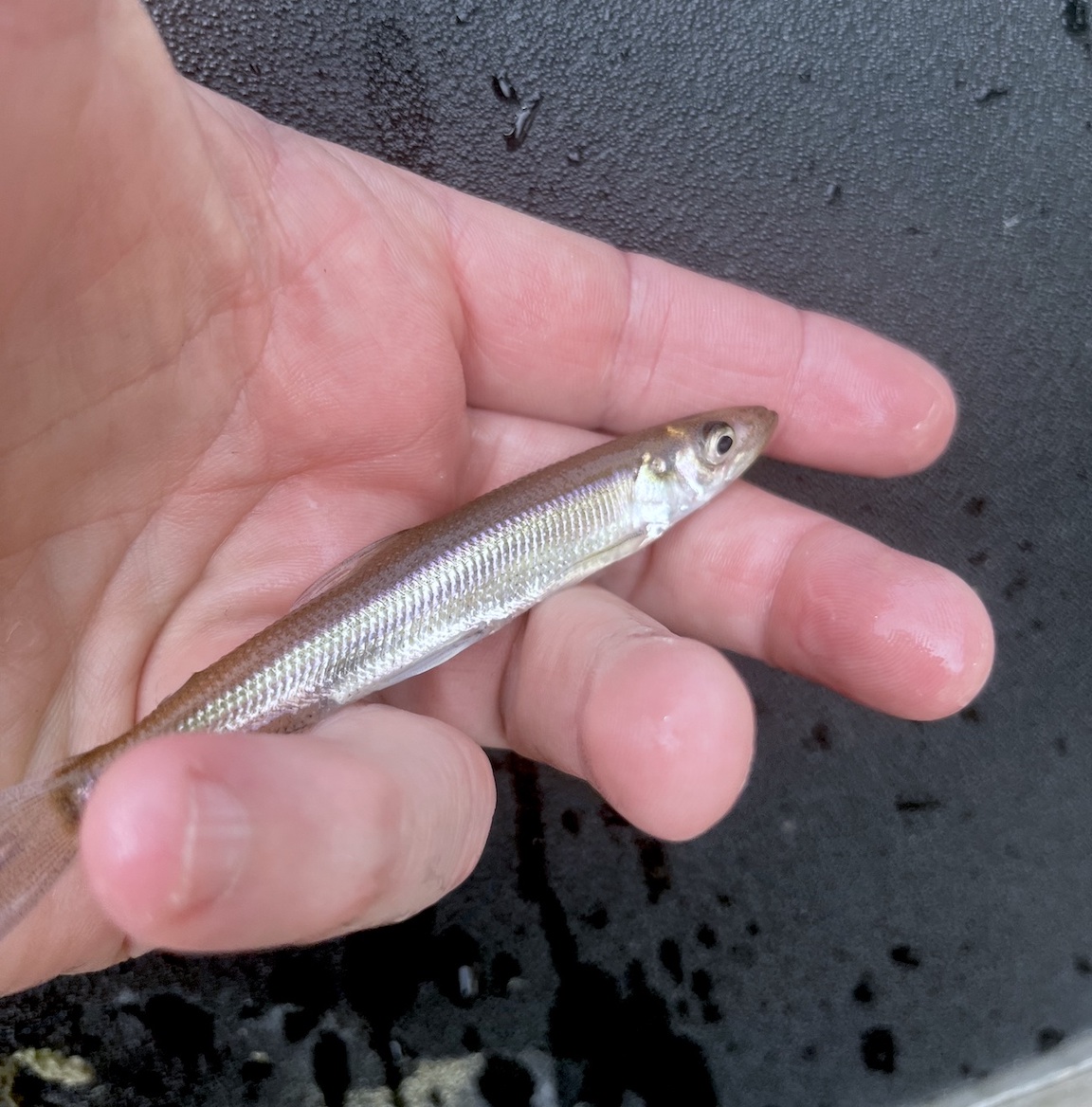Featured News - Current News - Archived News - News Categories
Capt. Campbell: "Smelt Are Running"
by Capt. Frank Campbell, Destination Niagara Outdoors Director/Niagara County Sportfishing Coordinator
“What the heck is a smelt?” you ask? Smelt are invasive baitfish that entered Lake Ontario many years ago through the St. Lawrence Seaway. As it often occurs with non-native species, smelt numbers really climbed during the first few years after introduction, and they soon became Lake Ontario’s second-most-populous baitfish behind the alewife.
Lake trout loved them as they often occupied the same areas of the lake bottom; both species prefer colder water. But the lake trout were not the only consumers of this small, tasty fish, as anglers seemed to fancy them, too. People in the know love a good smelt fry, and eating them was only part of the enjoyment locally, as catching them seemed to be just as popular for the locals on the lower Niagara River.
Smelt spawn in the spring, shortly after ice is out when the water temperatures reach about 40 degrees. They make the journey from the depths of Lake Ontario to run up the river and use its nearshore waters to spawn. Most of the spawning action takes place under the cover of darkness, as the smelt are light sensitive.
Anglers line the shore. Using their lights to shine into the water to confirm the presence of schools of smelt, they swing their dip nets through the water with the current downstream as the fish swim upstream and right into the net. There is an art to timing the swing and moving it through the water to trap the smelt into the net. Some are more skillful than others in this “art of smelting.”
Although the numbers are nowhere close to what they used to be, there are still enough smelt around to make it worth the effort. The best smelting areas on the lower Niagara River are the Lewiston Landing area (often referred to as the sand docks), Artpark, and the dock at Joseph Davis State Park.
To enjoy a night of smelting, you will need a valid New York state fishing license, a net, and a bucket to empty your catch into. As with any fishing, you should know the regulations and limits, which in this case is 8 quarts per person. Also, an abundance of caution should be taken while spending time near the water, especially at night. It definitely can be dangerous, so take precautions such as wearing a lifejacket and enjoying the outing with a buddy.
If you are not up to climbing down the bank at Artpark or spending hours at the sand docks, don’t lose hope for a fish fry. The Lewiston Smelt Festival will be back again this year through the efforts of the Upward Niagara Chamber of Commerce, in cooperation with The Griffon Gastro Pub and DiMino’s Lewiston Tops. The date is May 24 at the Griffon on Water Street. For a small fee, you can enjoy a plate full of tasty smelt that are cooked to perfection. Make plans to come down that Friday night. The hours are 4-8 p.m., but I suggest arriving early so you will not be disappointed if they run out.
Ever year about this time, the angling community embarks on a mission to help ensure the survival and imprinting of trout and salmon to the Niagara River. This year is no different, as the NRAA pen project is underway in Youngstown. The CliffsNotes version of the process is that 10,000 steelhead and 90,000 chinook salmon are delivered from the New York Department of Environmental Conservation hatchery in Altmar in mid-April.
The fish are put into pens and fed on a daily basis for about three to four weeks. During this time, the trout and salmon will undergo a smolting process, which will guide the fish back into the Niagara River as adults. In addition to the smolting process, the holding pens serve as a safe environment for the young salmon and trout to acclimate to the water minus the threat of predation from birds and gamefish.
The fish will almost double in size during their confinement in the pens, and this translates to significantly better survival over direct stocked trout and salmon.
Next month, I will report on the release and exactly how the project works in more detail. I would just like to offer thanks to the Village of Youngstown and Mayor Rob Reisman and Niagara County Legislator Irene Myers for their help in securing the future of this important project.
I hope to see you enjoying the local outdoors. Every week, I produce a fishing report, Niagara County Fishing Hotline. You can access it online at www.niagarafallsusa.com or by simply calling 716-282-8992, ext. 4, to hear what’s up in the world of fishing. It is updated every Wednesday.
